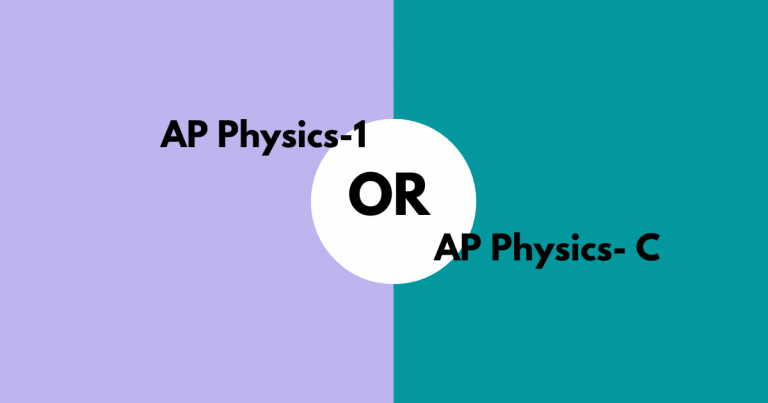In today’s world, STEM (Science, Technology, Engineering, and Mathematics) education forms the backbone of innovation, from artificial intelligence to space exploration. Among these, AP Physics stands out as a course that doesn’t just teach laws of motion or electricity — it sharpens analytical thinking, problem-solving, and real-world reasoning.
But here’s the secret many top students use: combining AP Physics with other STEM courses like AP Calculus, AP Chemistry, AP Computer Science, and AP Statistics. This combination doesn’t just boost college readiness — it creates a synergy that helps students connect theories, build interdisciplinary understanding, and excel in advanced college programs [1].
1. Why Combine AP Physics with Other STEM Courses?
Physics sits at the intersection of all scientific learning. When you combine it with other STEM subjects, you learn to view problems from multiple dimensions.
For example:
- Physics + Math = stronger conceptual and quantitative reasoning.
- With Chemistry = better understanding of atomic and molecular behavior.
- Physics + Computer Science = foundation for robotics, AI, and quantum computing.
This multidisciplinary approach not only boosts performance but also aligns with the way modern scientific research and engineering problems are solved.
2. AP Physics and AP Calculus: The Perfect Pair
If there’s one course that complements Physics the most, it’s AP Calculus (AB or BC).
In Physics, concepts like motion, force, and energy are deeply rooted in calculus — derivatives describe velocity and acceleration, while integrals calculate work and electric flux.
Benefits:
- Builds a mathematical framework for understanding physics equations.
- Strengthens logical reasoning and prepares students for engineering majors.
- Helps in tackling AP Physics C: Mechanics and Electricity & Magnetism more effectively.
Pro Tip: Start with AP Calculus AB alongside AP Physics 1, then advance to BC when tackling AP Physics C.
3. AP Physics and AP Chemistry: Understanding Matter and Energy Together
Both subjects explore energy transformation and the behavior of matter, but from different perspectives.
Physics looks at motion, forces, and energy in a macroscopic sense, while Chemistry zooms into atomic and molecular levels.
When studied together:
- Students understand thermodynamics more comprehensively.
- Topics like heat transfer, atomic models, and quantum mechanics connect naturally [2].
- Laboratory skills improve — experiments overlap in data analysis and measurement techniques.
This combination is ideal for future chemical engineers, materials scientists, or biophysicists.
4. AP Physics and AP Computer Science: The Path to Innovation
Modern physics research and technology heavily depend on computational tools.
Combining AP Physics with AP Computer Science A or Principles helps students model physical systems, simulate experiments, and understand data-driven results.
Advantages:
- Develops algorithmic thinking and problem-solving through simulations.
- Enhances understanding of topics like motion modeling, optics, and electromagnetism using code.
- Opens doors to fields like quantum computing, robotics, and aerospace engineering.
5. AP Physics and AP Statistics: Making Data Meaningful
Physics experiments produce lots of data — from velocity-time graphs to voltage measurements. AP Statistics helps interpret that data accurately and make logical conclusions.
When combined:
- Students gain insight into data variability, error margins, and correlation.
- Helps in writing precise lab reports and analyzing experimental results.
- Builds skills crucial for data science, physics research, and scientific writing.
6. Real-World Benefits of Combining STEM Courses
By combining AP Physics with other STEM courses, students:
- Build strong college applications with a rigorous academic profile.
- Gain interdisciplinary understanding necessary for engineering, medical, and research careers.
- Learn time management, critical reasoning, and problem-solving at an advanced level.
Colleges value students who take on challenging combinations — it shows curiosity, resilience, and a love for learning that goes beyond grades.
7. How Kapdec Supports STEM-Driven Learning
At Kapdec, we understand that learning Physics isn’t just about solving equations — it’s about building real-world connections across STEM.
Our expert tutors design integrated study plans that connect AP Physics topics with Math, Chemistry, and Computer Science — so students don’t just memorize but understand how principles overlap.
Kapdec’s interactive learning modules, mock tests, and visual simulations help students prepare for the AP exams while mastering interconnected STEM concepts essential for college and career success.
FAQ’s
Why should I combine AP Physics with other STEM courses?
Combining AP Physics with other STEM subjects strengthens your understanding of interconnected scientific ideas. Physics complements Math, Chemistry, and Computer Science, helping you apply formulas, analyze data, and understand real-world applications better. It also enhances problem-solving and prepares you for rigorous college-level STEM programs.
What’s the best math course to take alongside AP Physics?
AP Calculus AB or BC is the best companion course. Physics topics like motion, force, and energy rely on calculus principles such as derivatives and integrals. Taking both simultaneously helps you understand equations conceptually and improves your performance in AP Physics C courses.
How does AP Chemistry support AP Physics learning?
AP Chemistry deepens your understanding of matter and energy, which are key themes in physics. Concepts like thermodynamics, atomic models, and quantum theory overlap in both subjects. Studying them together gives you a stronger foundation for fields like materials science or chemical engineering.
Is it useful to pair AP Physics with AP Computer Science?
Yes. Physics relies heavily on computational models and simulations. AP Computer Science teaches you how to code, analyze algorithms, and simulate experiments — valuable skills for modern fields like robotics, data science, and quantum computing.
Can AP Statistics help in Physics preparation?
Absolutely. Physics experiments involve large datasets and measurement errors. AP Statistics helps you interpret data accurately, calculate uncertainties, and draw logical conclusions — improving your experimental and analytical skills, especially for lab reports.
Which combination is best for engineering aspirants?
Students aiming for engineering should take AP Physics, AP Calculus, and AP Computer Science together. This trio builds quantitative reasoning, problem-solving, and computational skills that are essential for mechanical, electrical, and aerospace engineering programs.
How does combining STEM courses help in college applications?
Top universities appreciate students who take on interdisciplinary academic challenges. Combining AP Physics with other STEM courses showcases intellectual curiosity, perseverance, and readiness for advanced science or engineering majors — giving you a competitive edge.
How can Kapdec help students manage multiple AP STEM courses?
Kapdec provides structured online tutoring that connects concepts across Physics, Math, and Computer Science. Through expert-led sessions, customized study plans, and interactive resources, students learn smarter, not harder — mastering subjects in a way that builds both depth and confidence.
Final Thoughts
Combining AP Physics with other STEM subjects isn’t just a study strategy — it’s a way to think like a scientist. When you connect calculus with motion, chemistry with energy, and computing with data, you’re training yourself to solve real-world problems with confidence.
With the right guidance from Kapdec’s tutors, students can turn their AP courses into a launchpad for innovation and success in the modern STEM world.

